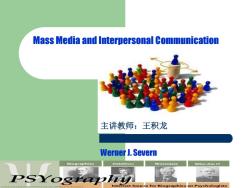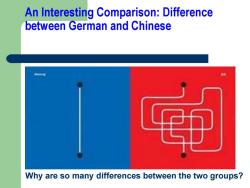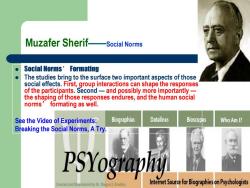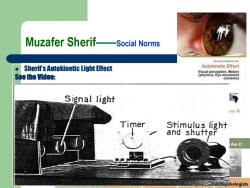《传播学导论》课程教学资源(阅读材料)Mass Media and Interpersonal Communication

Mass Media and Interpersonal Communication 主讲教师:王积龙 Werner J.Severn Biographies Datelines Bioscopes who Am 1? on Psychologists
Mass Media and Interpersonal Communication Werner J. Severn 主讲教师:王积龙

An Interesting Comparison:Difference between German and Chinese Why are so many differences between the two groups?
An Interesting Comparison: Difference between German and Chinese Why are so many differences between the two groups?

www.jingdehome.com

Kurzer Lewin-Interpersonal Communication ● primary group A primary group is a typically small social group whose members share close,personal,enduring relationships.These groups are marked by members'concern for one another,shared activities and culture,and long periods of time spent together.Examples include family,childhood friends,and highly influential social groups(team sports groups,academic groups,etc...). reference group A reference group is a sociological concept referring to a group to which another group is compared.Reference groups are used in order to evaluate and determine the nature of a given individual or other group's characteristics and sociological attributes.Reference groups provide the benchmarks and contrast needed for comparison and evaluation of group and personal characteristics. casual group People in a casual group interact on a less personal level than in a primary group,and their relationships are temporary rather than long lasting.Since casual groups are established to perform functions, people's roles are more interchangeable
Kurzer Lewin——Interpersonal Communication primary group A primary group is a typically small social group whose members share close, personal, enduring relationships. These groups are marked by members' concern for one another, shared activities and culture, and long periods of time spent together. Examples include family, childhood friends, and highly influential social groups (team sports groups, academic groups, etc...). reference group A reference group is a sociological concept referring to a group to which another group is compared. Reference groups are used in order to evaluate and determine the nature of a given individual or other group's characteristics and sociological attributes. Reference groups provide the benchmarks and contrast needed for comparison and evaluation of group and personal characteristics. casual group People in a casual group interact on a less personal level than in a primary group, and their relationships are temporary rather than long lasting. Since casual groups are established to perform functions, people’s roles are more interchangeable

Muzafer Sherif- Social Norms ● Social Norms Of interest to most social scientists across disciplines,social norms are group-held beliefs about how members should behave in a given context.Sociologists describe norms as laws that govern society's behaviors,while psychologists have adopted a more general definition,recognizing smaller group units,like a team or an office,may also endorse norms separate or in addition to cultural or societal expectations.The psychological definition emphasizes social norms'behavioral component,stating norms have two dimensions:how much behavior is exhibited and how much the group approves of that behavior
Muzafer Sherif——Social Norms Social Norms Of interest to most social scientists across disciplines, social norms are group-held beliefs about how members should behave in a given context. Sociologists describe norms as laws that govern society’s behaviors, while psychologists have adopted a more general definition, recognizing smaller group units, like a team or an office, may also endorse norms separate or in addition to cultural or societal expectations. The psychological definition emphasizes social norms' behavioral component, stating norms have two dimensions: how much behavior is exhibited and how much the group approves of that behavior

Muzafer Sherif-social Norms Social Norms'Formating The studies bring to the surface two important aspects of those social effects.First,group interactions can shape the responses of the participants.Second-and possibly more importantly- the shaping of those responses endures,and the human social norms’ formating as well. See the Video of Experiments: Biographies Datelines Bioscopes Who Am I? Breaking the Social Norms,A Try. PSYography Created and Malntaned by Dr.MeganE.Bradley Intemet Source for BiographiesonPsychoogists
Muzafer Sherif——Social Norms Social Norms’ Formating The studies bring to the surface two important aspects of those social effects. First, group interactions can shape the responses of the participants. Second — and possibly more importantly — the shaping of those responses endures, and the human social norms’ formating as well. See the Video of Experiments: Breaking the Social Norms, A Try

Muzafer Sherif- Social Norms ● Sherifs Autokinetic Light Effect Autokinetic Effect Visual perception,Motion s00th01100: (physics).Eye movement (sensory) Signal light es:0 Timer Stimulus light and shuffer Am I? hologists
Muzafer Sherif——Social Norms Sherif’s Autokinetic Light Effect See the Video:

Chiang Ching-kuo Effect
Chiang Ching-kuo Effect

Solomon Asch-Group Pressure ● ASCH,S.E.Studies of independence and conformity: a minority of one against a unanimous majority. Psychological Monographs,1956,70. Aim The aim of these studies was to investigate conformity in a group situation. ●Method Laboratory experiment Biographies Datelines Bioscopes Who Am I? PSYography talned by Dr. Intemet Source for Biographies on Psychologists
Solomon Asch——Group Pressure ASCH, S.E. Studies of independence and conformity: a minority of one against a unanimous majority. Psychological Monographs, 1956, 70. Aim The aim of these studies was to investigate conformity in a group situation. ● Method Laboratory experiment

Solomon Asch-Group Pressure The experimenter arrives and tells you that the study in which you are about to participate concerns people's visual judgments.She places two cards before you.The card on the left contains one vertical line.The card on the right displays three lines of varying length. The experimenter asks all of you,one at a time, to choose which of the three lines on the right card matches the length of the line on the left card. See the video of the Experiment. X A B C
Solomon Asch——Group Pressure The experimenter arrives and tells you that the study in which you are about to participate concerns people's visual judgments. She places two cards before you. The card on the left contains one vertical line. The card on the right displays three lines of varying length. The experimenter asks all of you, one at a time, to choose which of the three lines on the right card matches the length of the line on the left card. See the video of the Experiment
按次数下载不扣除下载券;
注册用户24小时内重复下载只扣除一次;
顺序:VIP每日次数-->可用次数-->下载券;
- 《传播学导论》课程教学资源(阅读材料)Health Communication.pdf
- 《传播学导论》课程教学资源(阅读材料)From Marshall Mcluhan to postmodernism.pdf
- 《传播学导论》课程教学资源(阅读材料)Effects of Media Communication.pdf
- 《传播学导论》课程教学资源(阅读材料)Communication Model.pdf
- 《传播学导论》课程教学资源(阅读材料)Cognitive Consistency.pdf
- 《传播学导论》课程教学资源(阅读材料)Analysis of Propaganda Decoding & Its Effects.pdf
- 《新闻学概论》课程教学资源(学习笔记)新闻学概论课堂笔记.pdf
- 《新闻采访》课程教学资源(文献资料)异地采访经验谈.doc
- 《新闻采访》课程教学资源(文献资料)现场采访经验.doc
- 《新闻采访》课程教学资源(文献资料)国际足球赛事采访经验谈.doc
- 《新闻采访》课程教学资源(文献资料)采访写作课的新理念与新实践.pdf
- 《新闻采访》课程教学资源(文献资料)简论典型人物的采访技巧.pdf
- 《新闻采访》课程教学资源(文献资料)论电视新闻采访的真实性、简论典型人物的采访技巧.pdf
- 《新闻采访》课程教学资源(文献资料)谈电视新闻采访中的女性特质.pdf
- 《新闻采访》课程教学资源(文献资料)试论新时期我国付费采访的表现形式及其影响.pdf
- 《新闻采访》课程教学资源(文献资料)越看越糊涂的报纸新闻——谈记者的采访要领和利用传媒特许权.pdf
- 《新闻采访》课程教学资源(文献资料)我国隐性采访的法律规范.pdf
- 《新闻采访》课程教学资源(文献资料)几种热门的专业新闻采访.doc
- 《新闻采访》课程教学资源(文献资料)专题三 新闻事件类之经济类采访.doc
- 《新闻采访》课程教学资源(文献资料)专题二 新闻事件类之时政类采访.doc
- 《传播学导论》课程教学资源(阅读材料)Mass Media Effects and Uses.pdf
- 《传播学导论》课程教学资源(阅读材料)Measurement of Readability.pdf
- 《传播学导论》课程教学资源(阅读材料)Perception and Language Issues in the Mass Media.pdf
- 《传播学导论》课程教学资源(阅读材料)The Knowledge-Gap Hypothesis.pdf
- 《传播学导论》课程教学资源(阅读材料)Theory of Persuasion.pdf
- 《传播学导论》课程教学资源(阅读材料)Uses and Gratification Approach.pdf
- 苏州大学:《电视摄像基础》课程教学资源(课件讲稿)第一章 摄像机(1节)摄像机发展史.pdf
- 苏州大学:《电视摄像基础》课程教学资源(课件讲稿)第一章 摄像机(2节)摄像机的结构(A).pdf
- 苏州大学:《电视摄像基础》课程教学资源(课件讲稿)第一章 摄像机(2节)摄像机的结构(B).pdf
- 苏州大学:《电视摄像基础》课程教学资源(课件讲稿)第一章 摄像机(3节)节摄像机的调整与使用.pdf
- 苏州大学:《电视摄像基础》课程教学资源(课件讲稿)第一章 摄像机(4节)摄像机持机方式.pdf
- 苏州大学:《电视摄像基础》课程教学资源(课件讲稿)第一章 摄像机(5节)摄像机的分类.pdf
- 苏州大学:《电视摄像基础》课程教学资源(课件讲稿)第二章 电视画面.pdf
- 苏州大学:《电视摄像基础》课程教学资源(课件讲稿)第三章 电视画面构图.pdf
- 苏州大学:《电视摄像基础》课程教学资源(课件讲稿)第五章 固定画面.pdf
- 苏州大学:《电视摄像基础》课程教学资源(课件讲稿)第六章 电视场面调度.pdf
- 苏州大学:《电视摄像基础》课程教学资源(课件讲稿)第四章 电视摄像用光.pdf
- 苏州大学:《电视摄像基础》课程教学资源(课件讲稿)HVX200操作要领(10个如何).pdf
- 苏州大学:《电视摄像基础》课程教学资源(课件讲稿)第七章 电视画面的蒙太奇规律.pdf
- 苏州大学:《电视摄像基础》课程教学资源(课件讲稿)第九章 电视艺术片拍摄.pdf
